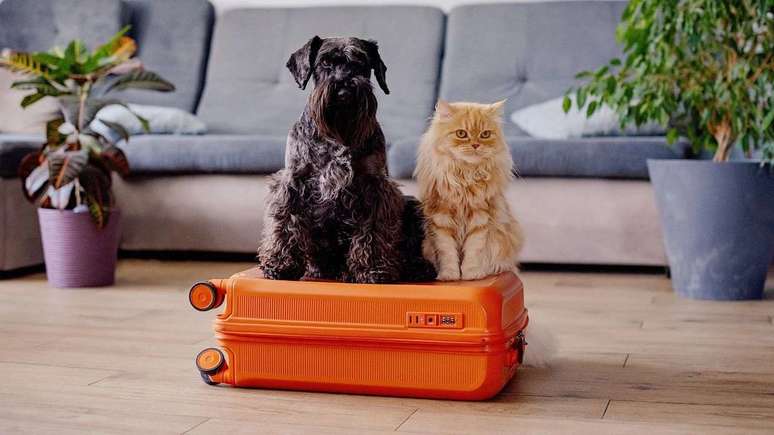Understanding how to care for dogs and cats when traveling with pets is essential to making your trip fun and safe.
Travel within end of year holidays always promises lots of fun for the whole family, as well as a time to recharge after a busy year. However, if you travel with your pets, you need to know the special attention they reserve for them dogs and cats request during these tours. After all, they must also be able to have fun and feel comfortable, right?
“Regardless of the species, preparing for the trip includes checking that the vaccination card is up to date. And also that the animal has a recent health certificate issued by a veterinarian. It is also important to have pesticides (flea and dewormers) every day, to prevent the animal from being exposed to parasites”, explains veterinarian Marina Tiba.
She, who is also Product Manager of the Pet Unit of Ceva Saúde Animal, also reminds you that it is essential to bring some objects with you when traveling with dogs and cats, such as containers for food and water, the usual food, snacks, the kennel and toys. Also essential are a walking leash, collar with identification tag and, if possible, a contact number and address of a veterinary center in the region in case of emergency.
However, in addition to these more general tips, there are also some precautions specific to dogs or cats, as they differ in several aspects. Below, see expert advice for traveling with dogs and cats:
Traveling with dogs
For them, attention during the trip itself is very important. “They usually enjoy the company of their owner during travel and may travel with their own seat belt, in seats or in carrying crates. On airplanes, small dogs can travel in the cabin, while larger dogs travel in the Furthermore, dogs need regular breaks to relieve themselves and expend energy”, explains Marina.
Traveling with cats
Cats, being more territorial, tend to get stressed in unfamiliar environments. Therefore, it is necessary to analyze whether it will really be good for them to travel.
“If you decide to travel with your cat, it is essential to make sure that the carrier is comfortable and suitable for the size of the cat”, explains the professional.
Since felines tend to prefer what is familiar, a good strategy is to leave the carrier open in an environment accessible to the animal. Ideally for a few days before the trip. If possible, place a blanket and your pet’s toys inside the box, as well as offer treats. This can help you get used to the place and make the environment more welcoming.
Finally, another important tip is to cover the top of the box with a towel. This limits the cat’s vision and reduces excessive visual stimuli, helping to avoid stress.
Source: Terra
Ben Stock is a lifestyle journalist and author at Gossipify. He writes about topics such as health, wellness, travel, food and home decor. He provides practical advice and inspiration to improve well-being, keeps readers up to date with latest lifestyle news and trends, known for his engaging writing style, in-depth analysis and unique perspectives.









